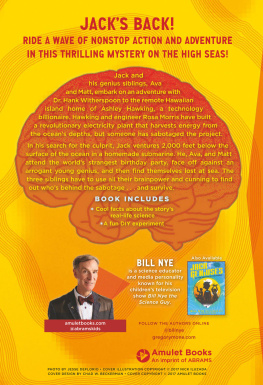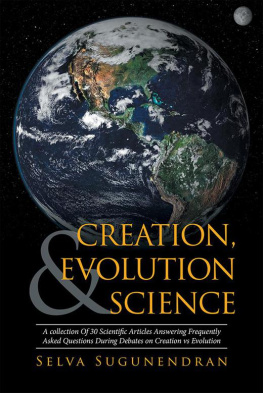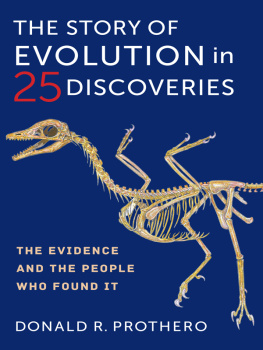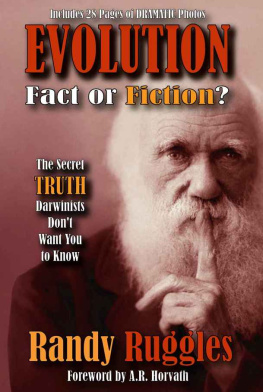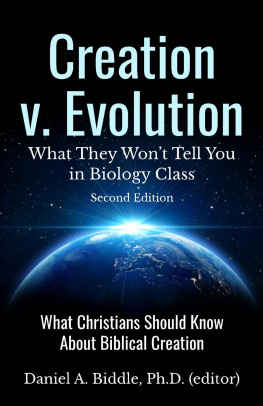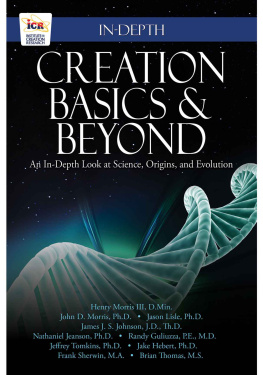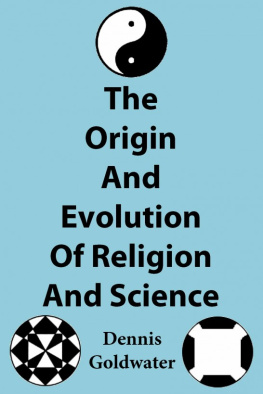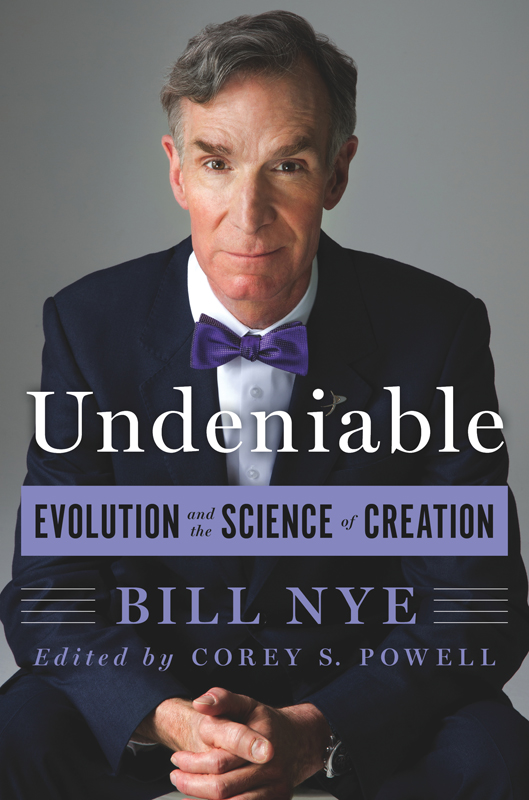Contents
Guide

The author and publisher have provided this e-book to you for your personal use only. You may not make this e-book publicly available in any way. Copyright infringement is against the law. If you believe the copy of this e-book you are reading infringes on the authors copyright, please notify the publisher at:
us.macmillanusa.com/piracy.
Dedicated to science students of all ages, wishing you countless safe journeys and the infinite joy of discovery
CONTENTS
ME AND YOU AND EVOLUTION, TOO
I think it started with the bees. I was about seven years old, and I watched them all day. That Sunday, I had read the Ripleys Believe It or Not column in The Washington Post , which claimed, The Bumblebee: Considering its size, shape, and wingspan, is an aerodynamic misfitwhich should be unable to fly! It was frustrating, because here they were flying. I got caught up in the details. Their wings looked like decoration, no more useful than a store-bought bow glued to a gift. I looked closely at my mothers azalea flowersso many delicate parts. Somehow, the bees were able to get in there, fill their pollen baskets from the flowers, and fly away again and again.
How did bees learn to do all that? Where did they come from? Where did the flowers come from? Come to think of it, how did any of us get here? Why did Ripleys have it so obviously wrong? I was getting pulled into something much larger than myself. The yearning to know about nature and where or how we fit in is deep within all of us. As I learned about evolution and descent by natural selection, the answers fell into place.
We are all aware that evolution happens, because we all have parents. Many of us have, or will have, children. We see the effects of heredity up close and personal. Weve also experienced firsthand what Charles Darwin called descent with modification: the way that an entire population of living things can change from generation to generation. Think about the food grown on farms. For about twelve thousand years, exploiting the phenomenon of evolution, humans have been able to modify plants through a process known as artificial selection. In wheat farming and horse racing we call it breeding. Darwin realized that breeding (and domesticating) plants and animals involves exactly the same process that occurs naturally in evolution, only accelerated with the help of humans. This natural process produced you and me.
Once you become awareonce you see how evolution worksso many familiar aspects of the world take on new significance. The affectionate nuzzling of a dog, the annoying bite of a mosquito, the annual flu shot: All are direct consequences of evolution. As you read this book, I hope you will also come away with a deeper appreciation for the universe and our place within it. We are the results of billions of years of cosmic events that led to the cozy, habitable planet we live on.
We experience evolution every day in our culture as well. People everywhere are fascinated with other people. Thats why we have sidewalk cafs, televisions, and gossip magazines. We interact to produce more of us for future generations. People are fascinated with their bodies. Turn on the television to any channel. If its youth-oriented music programming, youll see advertisements for skin medicines to make you look healthy, for deodorants to modify your natural scents, and for hair and makeup products to render you more attractive to a potential mate. If its a staid news channel, youll see ads for improving your breathing, your bones, and, of course, your sexual performance. None of these products would be produced were we not walking, talking products of evolution.
We are all so much alike, because we are all human. But it goes deeper than that. Every species youll encounter on Earth is, near as we can tell, chemically the same inside. We are all descended from a common ancestor. We are shaped by the same forces and factors that influence every other living thing, and yet we emerged as something unique. Among the estimated 16 million species on Earth, we alone have the ability to comprehend the process that brought us here. Any way you reckon it, evolution is inspiring.
Despite all of that, a great number of people in many parts of the worldeven in well-educated parts of the developed worldare resistant or hostile to the idea of evolution. Even in places like Pennsylvania and Kentucky, here in the United States, the whole idea of evolution is overwhelming, confusing, frightening, and even threatening to many individuals. I can understand why. Its an enormous process, unfolding over times that dwarf a human lifespanacross billions of years and in every part of the world. And its profoundly humbling. As I learned more about evolution, I realized that from natures point of view, you and I aint such a big deal. Humans are just another species on this planet trying to make a go of it, trying to pass our genes into the future, just like chrysanthemums, muskrats, sea jellies, poison ivy and bumblebees.
Many people who are troubled by evolution want to suppress teaching the whole concept of descent through natural selection in schools. Others try to push it aside or dilute it by casting doubt on the established science that supports it. State education standards allow the teaching of fictitious alternatives to evolution in Texas, Louisiana, and Tennessee. Even though the people who support these curricula live lives that are enriched in many ways by science and engineering (everything from running water and abundant food to television and the Internet) they avoid the exploration of evolution, because it reminds us all that humankind may not be that special in natures scheme. What happens to other species also happens to us.
I continually remind people what is at stake here. Our understanding of evolution came to us by exactly the same method of scientific discovery that led to printing presses, polio vaccines, and smartphones. Just as mass and motion are fundamental ideas in physics, and the movement of tectonic plates is a fundamental idea in geology, evolution is the fundamental idea in all of life science. Evolution has essential practical applications in agriculture, environmental protection, medicine, and public health. What would the deniers have us do? Ignore all the scientific discoveries that make our technologically driven world possible, things like the ability to rotate crops, pump water, generate electricity, and broadcast baseball?
Even the theological objections to evolution stand on shaky ground. For the last century and a half, ever since the publication of Darwins On the Origin of Species in 1859, many people have come to believe that evolution is in conflict with their religious beliefs. At the same time, many people around the world who hold deep religious convictions see no conflict between their spiritual beliefs and their scientific understanding of evolution. So the naysayers are not only casting doubt on science and nonbelievers; they are also ignoring the billions of non-conflicted believers around the world, dismissing their views as unworthy.
Ill admit that the discovery of evolution is humbling, but it is also empowering. It transforms our relationship to the life around us. Instead of being outsiders watching the natural world go by, we are insiders. We are part of the process; we are the exquisite result of billions of years of natural research and development.
Frankly, my concern is not so much for the deniers of evolution as it is for their kids. We cannot address the problems facing humankind today without scienceboth the body of scientific knowledge and, more important, the process. Science is the way in which we know nature and our place within it.


